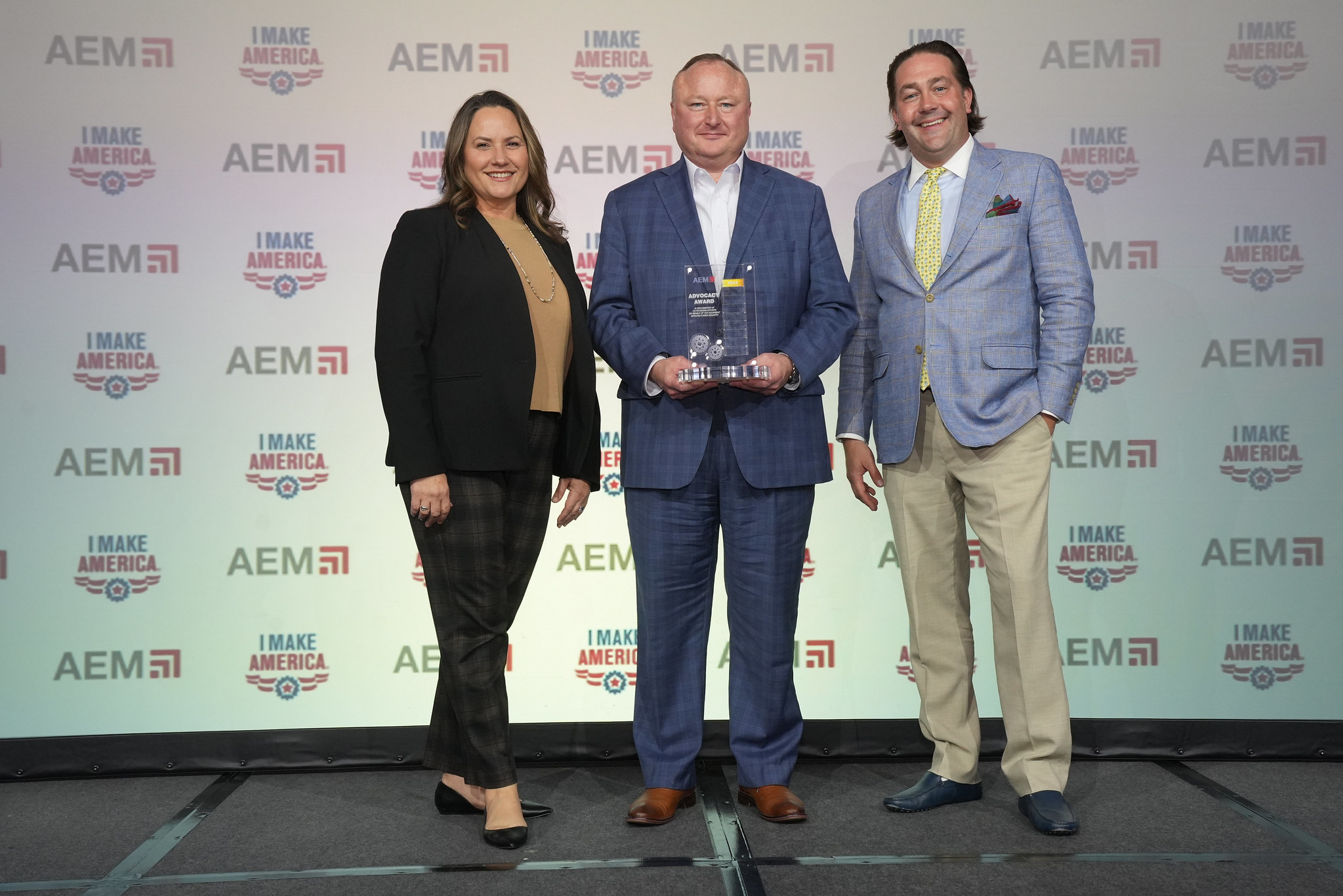By Jaime Vos, AEM Director of Safety Materials
In my last AEM Industry Advisor article, I wrote about the importance of safety signage in the manufacturing environment, the responsibilities of employers to protect workers, and the employee’s role in not becoming complacent to the message.
After reading that article, a coworker challenged me to examine the other side of the coin.
“Workplace signage is important,” she said. “But what about the labeling on the equipment itself? How does that factor into worker safety, and how does it differ from the safety message in the workplace?”
She had a point. I’ll admit, although I oversee safety material publications, I had never considered the specifics behind equipment labeling and its importance in the safe operation of machinery.
Feeling like I was a little over my head, I decided to consult an expert.
Angela Lambert is the head of standards compliance at AEM component member company Clarion Safety Systems. She has more than 15 years of experience in the field of warnings and liability and is actively involved at the leadership level in the (U.S.) ANSI and (international) ISO standards for product safety and visual safety communication. She is the chair of ANSI Z535.1, the standard that focuses on colors used in visual safety communication. She’s also a delegate representative to ANSI for the ISO/TC 145 SC2 WG 1 committee, responsible for the library of ISO 7010 registered symbols and the ISO 3864 set of standards. Additionally, she’s the liaison for ISO/TC 145 to ISO/TC 283, acting as a bridge between the international safety label/sign standards and workplace health/safety standards.
Angela outlined the important processes used in creating effective equipment safety labeling:
On Product Liability/Safety/Risk and Equipment Safety Labels
- Effective warning labels are critical in the construction and agriculture industries, where the interaction between people and machinery is frequent, making the potential for injuries possible. Labels can play a vital role in ensuring safer equipment and workplaces. The overall goal is to prevent injuries and save lives.
- Warnings and instructions can also decrease liability exposure. That is because manufacturers have a legal duty to warn: they must give people the information needed to avoid potential hazards throughout their product’s expected life (i.e., through transportation, installation, testing, operation, shut down, inspection, maintenance, final decommissioning and disposal). In that way, labels are an important part of risk communication.
- By following industry consensus standards that define today’s best practices in visual safety communication – the ANSI Z535.4 and ISO 3864-2 – equipment manufacturers can improve product safety and reduce their liability exposure.
- Generally speaking, a warning label should contain the following information:
- Identify the hazard
- Indicate the severity level of hazard
- Indicate the likelihood of the hazard resulting in harm
- Give instructions on how to avoid the hazard
- Describe what will happen if the warning is not heeded
- When it comes to the documentation you should look to have in preventing liability, three key aspects are:
- A documented risk assessment
- Product safety labels
- Product manuals and instructions
These areas are interconnected, and each support each other.
- Risk assessment is fundamental when it comes to machine and product design – as well as safety. You can’t design out a risk, safeguard a hazard or warn about a risk unless you first assess it. A thorough risk assessment will identify potential risks and control actions related to them to protect those who interact with the product during its lifecycle. Your warning systems – including labels and instructions – are an outcome of your risk assessment process. Intelligent decisions need to be made concerning how to warn effectively, so people can take the steps necessary to avoid harm.
Three Effective Strategies for Warnings and Instructions
- Use a quality risk assessment process (the foundation of a strong safety program and of a company’s labels/warnings) – performed routinely.
- Follow the latest versions of the ANSI/ISO standards for labels/warnings.
- Continuously reevaluate your company’s equipment safety program (including labels/warnings) in line with equipment and standards updates.
I was grateful for Angela’s willingness to contribute to this article. Even though equipment safety labeling may seem straightforward to most people, the processes behind the wording, design and risk communication are often multi-layered and complex. Safety professionals such as Angela have dedicated themselves to establishing standards to ensure that safety labeling goes through a documented process that it is clear and consistent.
Employers and workers should always make sure they’re aware of these standards, that they are trained properly to understand the safety messages behind them, and that risk assessment programs are continually updated.
As I’ve said in previous articles, businesses can ensure a safe workplace when leaders and employees make a personal commitment in championing a culture of safety. When goals are established, trained to, measured, and truly owned by everyone working together, the company will be well positioned to improve safety across the organization.
About Clarion Safety Systems
For over 30 years, Clarion Safety Systems has been the premier company in visual safety communication, supplying customers around the world with product safety labels and facility safety signs/tags – along with complementary machinery safety services – to reduce risk and protect people.
For More Information
AEM supports safety awareness year-round by offering an extensive array of safety products, including safety manuals and videos, with major equipment types covering aerial, agriculture, compact/portable, earthmoving, forestry, lifting, road paving and utility excavation applications.
Click here to see the complete line of AEM safety materials or visit safetymaterials.org.
AEM Safety & Product Leadership
AEM’s Safety & Product Leadership Department works to address ever-increasing global demands on equipment manufacturers to develop machines that are safe, productive and compliant. To learn more, visit https://www.aem.org/safety-product-leadership.
For more AEM staff perspectives, subscribe to the AEM Industry Advisor.





